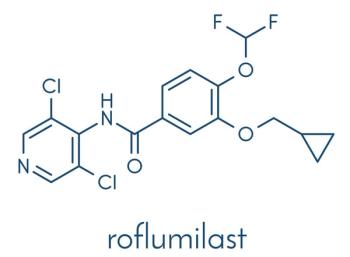
Seborrheic Keratoses
Benign skin tumors seen in pregnant patients as well as those who are not pregnant include acrochordons, seborrheic keratoses, pyogenic granulomas, and spider angiomas. There have been reports that melanocytic nevi develop or change during pregnancy; however, a pilot study at our institution was unable to confirm this finding.
Benign skin tumors seen in pregnant patients as well as those who are not pregnant include acrochordons, seborrheic keratoses, pyogenic granulomas, and spider angiomas. There have been reports that melanocytic nevi develop or change during pregnancy; however, a pilot study at our institution was unable to confirm this finding.
Acrochordons. Usually called “skin tags,” these are common benign tumors that usually appear on the neck, axillae, and groin as pedunculated, soft, flesh-colored to tan papules. They can also be deeply pigmented or turn shades of purple-red when they are traumatized or thrombosed. Skin tags are often bothersome to the patient because they can become irritated or get caught on clothing. However, they are rarely painful except when they become thrombosed.
Seborrheic keratoses. These are typically well-demarcated, tan to light brown to very dark brown papules and plaques that have a “stuck-on” appearance (Figure). These lesions can occur anywhere but appear to have a predilection for the areolae of the breasts in pregnant women. They are easily traumatized and then may appear as crusted, oozing plaques.
Spider angiomas. These lesions are made up a of central arteriole surrounded by capillaries that radiate outward. They are commonly located on the cheeks and may be seen in both children and adults. They occur frequently in pregnancy and may become less prominent or not visible after delivery.
Newsletter
Enhance your clinical practice with the Patient Care newsletter, offering the latest evidence-based guidelines, diagnostic insights, and treatment strategies for primary care physicians.



















































































































































































































































































